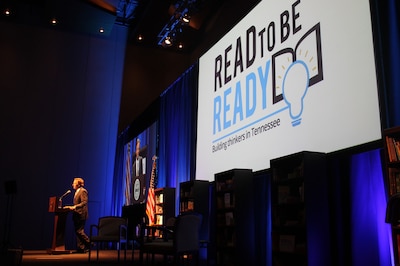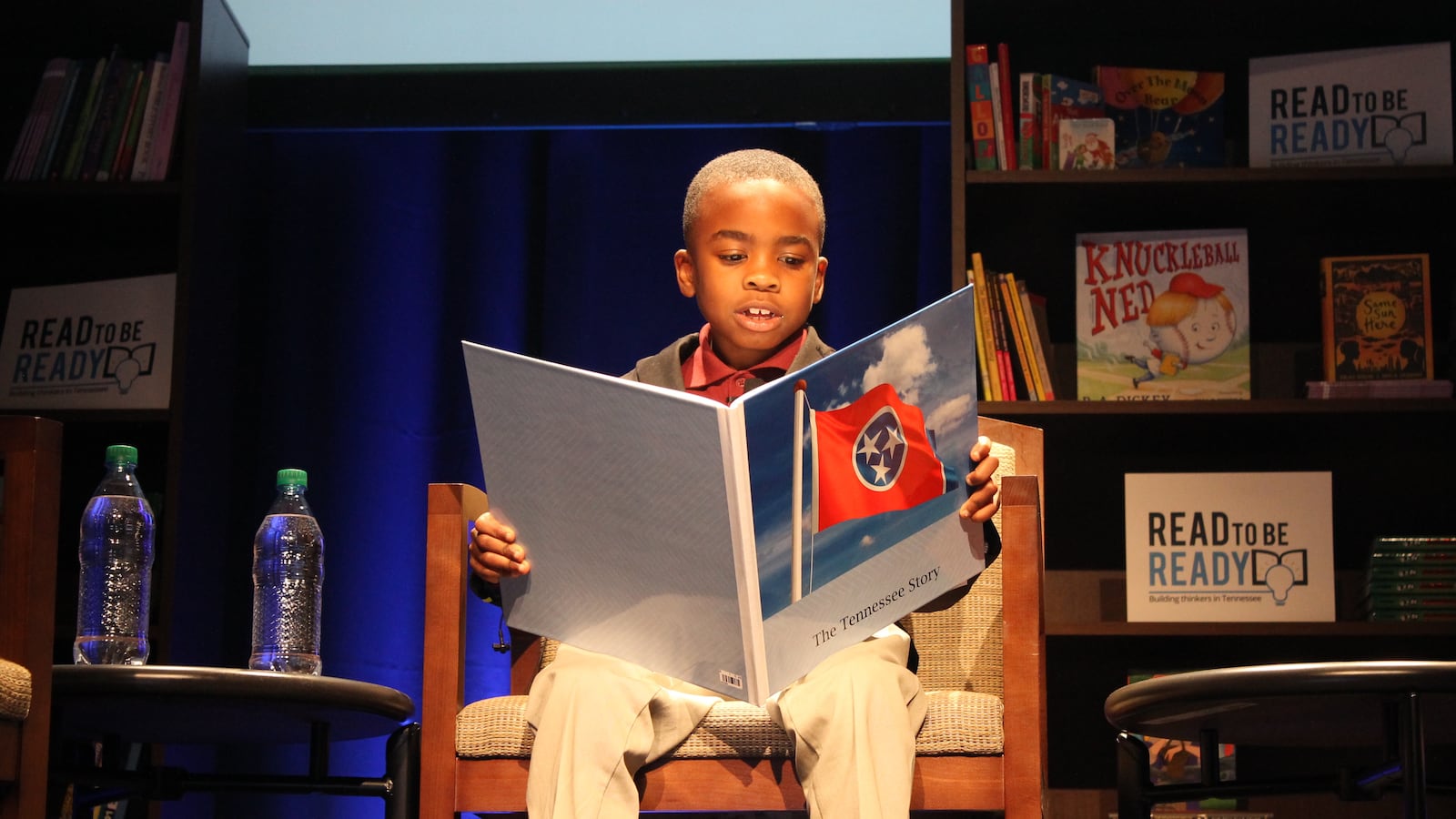In a state that has undergone sweeping education reforms during the last five years, one gnawing question persists:
Why can’t Tennessee students read?
After all, statewide math achievement scores are up, science scores are up. And the state has made an unprecedented investment in improving K-12 education since winning its $500 million federal Race to the Top award in 2010.
Yet with reading, considered the foundation for learning and success in all subject areas, just over 48 percent of Tennessee students in grades 3-8 passed the state’s proficiency bar last year, down 2 percentage points from the state’s peak in 2013. And on the most recent National Assessment of Educational Progress, also called the Nation’s Report Card, only one-third of Tennessee fourth-graders earned a proficient reading score.
The baffling data is the impetus for a statewide reading initiative kicked off Wednesday by Gov. Bill Haslam, first lady Chrissy Haslam and Tennessee Education Commissioner Candice McQueen.
Dubbed “Read to be Ready,” the initiative hones in on reading development in early elementary grades and aims to get 75 percent of the state’s third-graders proficient by 2025. Currently, less than half of Tennessee third-graders reach that bar.
“The old saying is you learn to read up until the third grade, and then you read to learn after that,” Haslam said before the kickoff event in Nashville. “We’re concerned that if too few of our kids are proficient in the third grade, then they won’t be ready for all the learning that comes after.”
The initiative calls for deeper literacy instruction that draws meaning from the text, rather than just decoding letters. It also focuses on working with struggling students by providing stronger intervention strategies to address both academic and non-academic obstacles.

Haslam’s proposed budget for 2016-17 includes a $9 million investment to create a network of literacy coaches and regional coordinators supporting literacy efforts across the state.
The good news, leaders say, is that Tennessee districts already are prioritizing reading development in early grades. This school year, 106 of the state’s 142 districts list reading as a top priority. Eighty percent of districts hired instructional coaches to support teachers, with most of their efforts aimed at improved literacy instruction. Teachers also have increasingly devoted more of their professional development hours toward the challenge.
The bad news is that, despite all these efforts, reading scores remain generally flat across the state, presenting “a true ethical and moral dilemma,” McQueen says.
Following last year’s disappointing reading results, McQueen and the Tennessee Department of Education sought to identify the barriers to literacy by commissioning several studies and enlisting the help of researchers from TNTP, a New York-based organization that seeks to ensure that poor and minority students get equal access to effective teachers.
"Teachers are spending time on skills, but they are rarely making the leap from decoding to reading."
Setting the Foundation report
Based on a report released to coincide with the initiative’s kickoff, researchers found that teachers are in fact spending time on reading skills, but students are rarely making the leap from decoding letters and words to the actual act of reading.
Two-thirds of K-2 lessons observed by the researchers focused on phonics and other word recognition abilities. But most did not provide students with opportunities to use their newly acquired skills to read and write. And little attention was given to the critical thinking building blocks that literacy experts consider key to later academic success.
In grades 3-5, researchers found that students spend relatively little time reading during school literacy blocks. “Lessons themselves did not push students to engage with the words on the page,” the report says.
Such connections are particularly important for economically disadvantaged students who often have limited experiences to develop rich vocabulary and contextual knowledge outside of school. “These students’ proficiency rates in third grade reading are half those of their (more affluent) peers,” the report said. “Without focused instruction we are unlikely to close the significant gaps that we see across our student populations.”
Not surprisingly, the report says, Tennessee’s reading gaps are particularly wide for students who are economically disadvantaged, racial minorities, disabled, and English language learners.
One problem is that too many students are missing time in school. According to the study, 10 percent of Tennessee third-graders missed almost half a year of school between kindergarten and third grade. “Because we know that chronic absenteeism in the early years is associated with poor reading, we must address this issue,” the report says.
Read to be Ready is the first major education initiative created and rolled out under Candice McQueen, who became the state’s education chief in January 2015 and was charged with continuing the reforms begun in 2011 under Race to the Top.

Read our 2015 story offering an early look at McQueen’s reading initiative.
“We have to approach this work from multiple angles,” McQueen said Wednesday, “strengthening the training that our teachers receive, deepening community partnerships to provide support for students and families after school and during the summer, as well as preparing our youngest students with early literacy skills before they ever enter a classroom.”
As part of the kickoff, Tennessee-based Dollar General Corp. announced a $1 million donation through its Dollar General Literacy Foundation to fund summer reading initiatives across the state.

